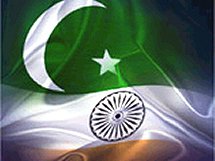New Indo-Pak co-authored book relives horrors of Partition
 Lahore, Feb. 5: The Society for the Protection of the Rights of the Child (SPARC) is launching a book on the Partition of the Indian subcontinent titled, Partition: Surgery without Anaesthesia, today (Tuesday).
Lahore, Feb. 5: The Society for the Protection of the Rights of the Child (SPARC) is launching a book on the Partition of the Indian subcontinent titled, Partition: Surgery without Anaesthesia, today (Tuesday).
The book contains accounts by eminent Muslims and Hindus of their experiences during the creation of Pakistan. It also contains the number of Hindus and Sikhs in Pakistani territory before and after the country came into being.
A SPARC official told the Daily Times that the book was a compilation by several notable people and their individual experiences of the partition. He said it was compiled in such a way that the reader would be able to understand the pain and suffering that millions of people went through at the time.
Besides 31 individuals’ personal experiences, the book contains overviews, by famous people, of books written on the partition. Synopses and excerpts from some of the articles in the book are:
Painter, sculptor, architect Satish Gujral, writes, “I suffered from what I witnessed.” He says that though 60 years have gone past, he has not been able to forget “the screams of women and children and images of brutality and murder. I feel that the suffering still continues.”
Writer and columnist Khushwant Singh says, “I thought the nation was coming to an end though the independence should have brought joy. Instead, it brought misery, heartbreak, loss of all that was precious, and most of all, bloodshed.”
Former federal secretary Dr M S Jillani, in his article Meeting Madness with Madness, recalls his memories of those days and wonders why Hindus and Muslims expelled each other from the two parts of Punjab.
A former diplomat, Pran Nevile, in his article I Still Remember Lahore Burning, recalls the events that took place in Lahore. He also calls for greater cross-border movement between India and Pakistan.
A former Indian civil Servant, Zia-ul-Haq, says: “My journey may have come to an end, but the scars continue to live with me. Many felt the trauma and devastation that I witnessed. Life goes on, but the memories remain.”
The book also states that during the partition, over seven million Muslims were forced to migrate from India to Pakistan and an almost equal number crossed the border in the opposite direction.
It states Lahore’s total population prior to independence was 1.2 million, including approximately 500,000 Hindus and 100,000 Sikhs. However, after the dust had finally settled, Lahore was left with a total of only 1,000 Hindus and Sikhs. It says that in the areas constituting West Pakistan, the Hindu and Sikh population accounted for 18.4 percent of the population but in the 1951 census, the proportion had declined to 1.6 percent.
The Punjab province showed the most marked decrease in the population of Hindus and Sikhs – from 20.5 percent in 1941 to 0.2 percent in 1951. Sindh was calmer where the number of Hindus was reduced from 1,109,000 in 1941 to about 464,000 in 1951, but in Karachi, the Hindus were reduced from 46.9 percent in 1941 to 1.6 percent in 1951.
Similarly, 73 percent of the migrants from India landed in West (Pakistani) Punjab making the province accommodate more than five million people. Forty-three percent of Lahore’s population consisted of migrants while the ratio was 49 percent in Multan, 50 percent in Gujranwala, 65 percent in Jhang and 69 percent in both Lyallpur
(Faisalabad) and Sargodha. (ANI)